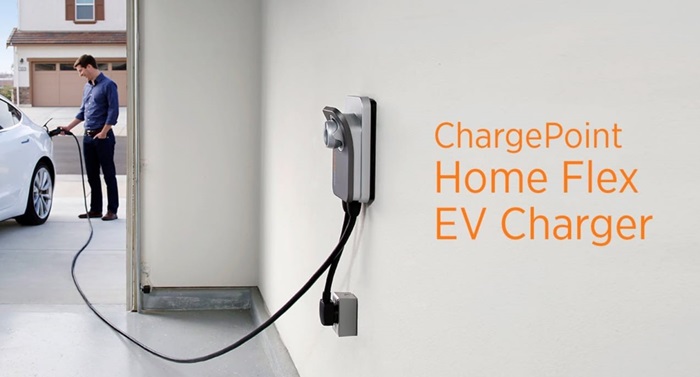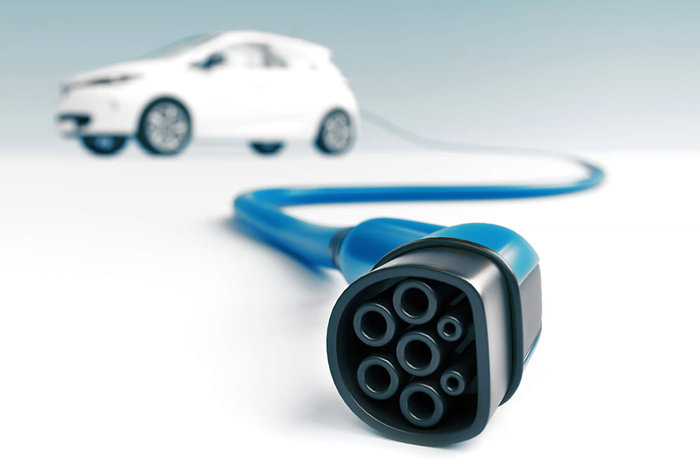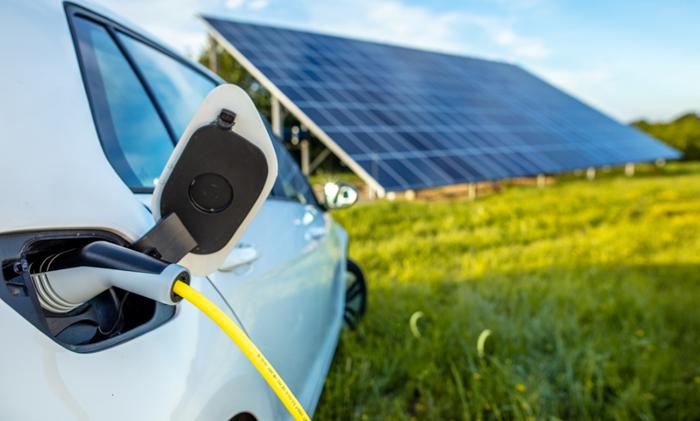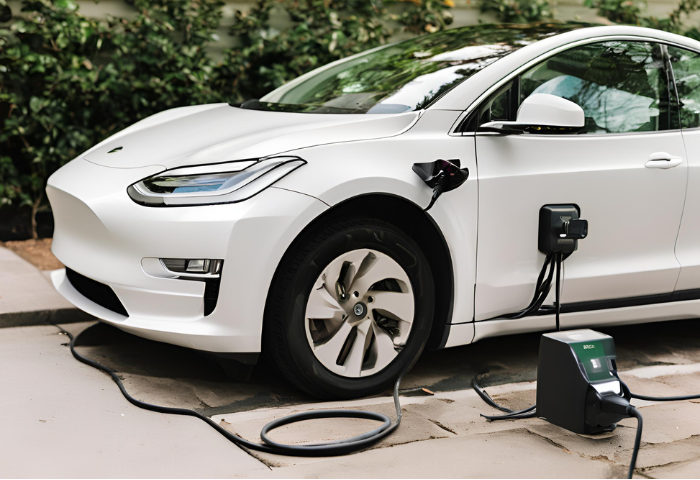ChargePoint Home Flex: Charge Your EV Faster and Smarter
The ChargePoint Home Flex is a Level 2 EV charger designed for home use. It offers a variety of features, including a 32-amp output, Wi-Fi connectivity, and compatibility with most electric vehicles. The Home Flex is also Energy Star certified, meaning it is energy efficient and can help you save money on your electricity bill.
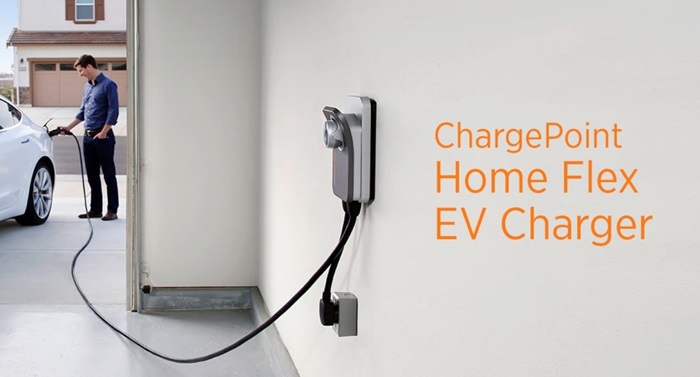
ChargePoint Home Flex Overview
ChargePoint Home Flex is a smart EV charging station that allows you to charge your electric vehicle at home. It’s designed to be flexible, powerful, and easy to use, providing EV owners with a reliable charging solution.
Benefits of using ChargePoint Home Flex:
- Faster charging: ChargePoint Home Flex delivers up to 40 amps of power, which can add up to 30 miles of range per hour, depending on your car.
- Convenience: Charge your EV at home overnight or whenever you need a boost.
- Works with most EVs: Available with J1772 or NACS (Tesla) connectors for compatibility with most electric vehicles.
- Flexible installation: Choose between a NEMA 6-50 plug for 40 or 50 amp circuits or a NEMA 14-50 plug for similar amperage. You can even move it to another compatible outlet if needed. (Note: This requires proper electrical installation).
Features of ChargePoint Home Flex:
- Adjustable Power: Users can select different power levels to optimize charging speed and energy efficiency.
- Smart Connectivity: The station can be connected to the internet, allowing for remote monitoring and control via a smartphone app or web portal.
- LED Display: Provides real-time charging status and other important information.
- Safety Features: Built-in protections against overcurrent, overvoltage, and overheating ensure safe charging.
- Customizable Scheduling: Users can set charging schedules to take advantage of off-peak electricity rates or to ensure that their vehicle is fully charged when needed.
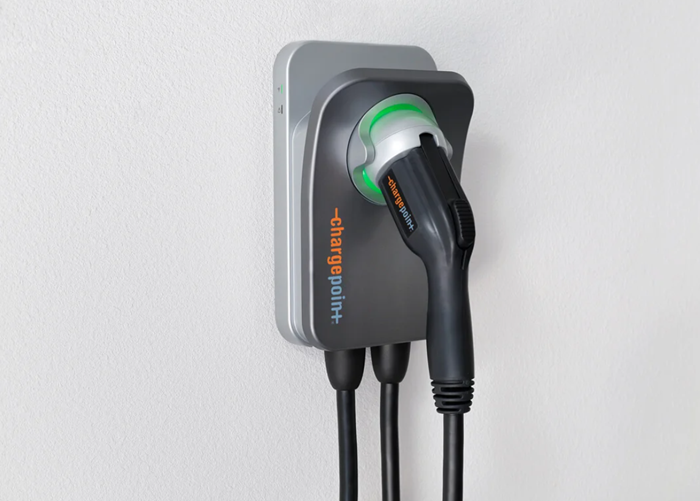
Installation process for ChargePoint Home Flex:
- Assessment: A professional electrician will assess your home’s electrical system to determine the best location for the charging station and ensure that it meets local electrical codes.
- Installation: The charging station is mounted on a wall and connected to your home’s electrical panel. This typically requires running wires and installing a dedicated circuit.
- Configuration: Once installed, the station is configured to your specifications, including setting charging preferences and connecting to your home Wi-Fi network.
- Testing: The installer will perform tests to ensure that the charging station is functioning properly and safely.
Compatibility of ChargePoint Home Flex:
ChargePoint Home Flex is compatible with most electric vehicles available on the market, including models from manufacturers such as Tesla, Nissan, Chevrolet, BMW, and more. It supports both plug-in hybrid electric vehicles (PHEVs) and battery electric vehicles (BEVs), making it a versatile charging solution for EV owners. Additionally, it can be installed in homes with either single-phase or three-phase electrical service, further enhancing its compatibility.
Charging Technology
By understanding these aspects of Level 2 charging, you can make informed decisions about charging your electric vehicle at home or on the go.
Charging Power and Speed:
- Level 2 chargers deliver AC power, typically at 240 volts (compared to 120 volts from a standard household outlet).
- They offer higher amperage (usually between 16 and 40 amps), significantly increasing charging speed compared to Level 1 charging (which uses a standard outlet).
- Depending on your car’s capabilities and the charger’s amperage, a Level 2 charger can add anywhere from 25 to 75 miles of range per hour.

Power Sharing Functionality:
- Some Level 2 chargers have power sharing capabilities. This means they can distribute available power between multiple EVs plugged in at once.
- This functionality is beneficial in multi-unit dwellings or public charging stations where several EVs might need charging simultaneously.
Charging Connector Types:
The two most common charging connector types for Level 2 charging are:
- The majority of EVs in North America use this standard connector, which is J1772.
- Tesla Supercharger: Tesla uses its proprietary connector for its Supercharger network, although some Tesla models also come with a J1772 adapter for compatibility with other Level 2 chargers.
Smart Charging Capabilities:
Many Level 2 chargers offer smart charging features that can optimize the charging process. These features include:
- Scheduling charging to take advantage of off-peak electricity rates.
- Remote monitoring and control of the charger through a smartphone app.
- Communication with the car’s battery management system to ensure safe and efficient charging.
Apps and Software
ChargePoint Mobile App Features
The ChargePoint mobile app is a handy tool for EV owners who use ChargePoint Home Flex or rely on the ChargePoint network for public charging. Here’s a glimpse into its functionalities:
- Find Stations: Locate nearby charging stations, including real-time availability information.
- Station Details: Get details about each station, including charger types, pricing (if applicable), and user reviews (where available).
- Start, Stop & Monitor Charging: Remotely initiate, stop, and monitor your charging session (if your charger supports Wi-Fi connectivity).
- Payment Methods: Manage your preferred payment methods for charging sessions.
- Charging History: Track your past charging history, including duration and estimated cost.
- Notifications: Receive alerts about charging status, completion, and any errors that might occur.
- Customization: Set filters to find stations compatible with your car’s connector type and preferred amenities.
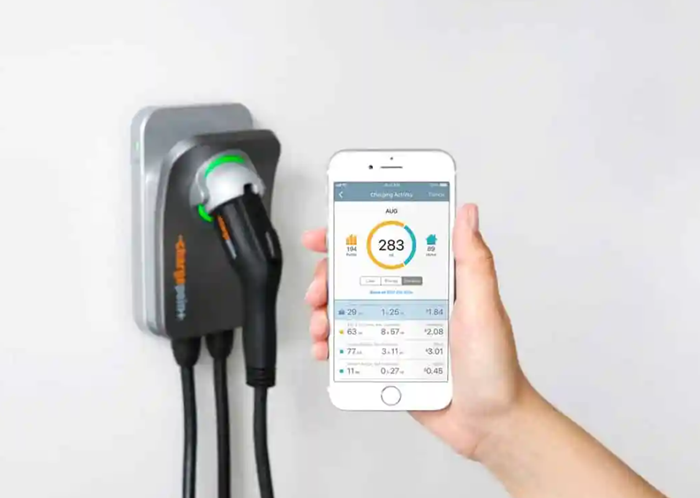
Remote Monitoring and Control:
As mentioned above, the app allows remote monitoring and control of your ChargePoint Home Flex charger (if Wi-Fi is connected). This means you can:
- Check the charging status in real-time.
- Stop a charging session remotely if needed.
- Schedule charging sessions to take advantage of off-peak electricity rates (depending on your charger model and utility provider).
Energy Management Options:
While the app itself might not offer extensive energy management features, it can indirectly contribute to it by allowing you to:
- Schedule charging during off-peak hours to potentially save on electricity costs (this requires coordination with your utility provider’s rates).
- Monitor your charging history to understand your EV’s energy consumption patterns.
Integration with Smart Home Systems:
Currently, there’s no official information on direct integration between the ChargePoint app and specific smart home systems. However, some ChargePoint Home Flex models might be compatible with third-party integrations that could allow for some level of control through your smart home ecosystem. It’s best to check with ChargePoint for compatibility details.
Software Updates and Improvements:
ChargePoint regularly releases updates to its mobile app to improve functionality, add new features, and address any bugs. These updates are typically downloaded and installed automatically on your smartphone.
Pricing and Plans
- Cost of ChargePoint Home Flex:
The cost of the ChargePoint Home Flex charging station can vary depending on factors such as region, installation requirements, and any additional accessories or services included. Typically, the base price for the charging station itself ranges from a few hundred to several hundred dollars. However, installation costs should also be considered, which can vary based on factors such as electrical work needed, labor rates, and local building codes.

- Flexibility in Payment Options:
ChargePoint offers flexibility in payment options for its charging stations. Users may have the choice to purchase the charging station outright or explore financing options, such as monthly installment plans or financing through third-party providers. Additionally, some utility companies and municipalities offer rebates or incentives for the installation of EV charging equipment, which can help offset the upfront cost.
- Subscription Plans Available:
ChargePoint may offer subscription plans for additional services or features beyond the basic functionality of the charging station. These plans could include access to advanced charging management features, enhanced support services, or discounted rates for public charging sessions on the ChargePoint network. Subscription plans vary by region and may be optional for users based on their individual needs and preferences.
- Warranty and Support Services:
ChargePoint typically provides a warranty for its charging stations to cover defects in materials and workmanship for a specified period. It is imperative to consult the ChargePoint warranty documentation for precise information, as warranty terms may differ based on the charging station’s model and other variables.
In terms of support services, ChargePoint offers customer support to assist users with installation, troubleshooting, and general inquiries related to their charging stations. Support channels may include phone, email, and online resources such as FAQs and user guides.
- Additional Accessories and Upgrades:
ChargePoint may offer additional accessories and upgrades for its charging stations to enhance functionality, convenience, or aesthetics. These accessories could include:
- Cable Management Solutions: Such as cable organizers or mounts to keep charging cables tidy and accessible.
- Connectivity Enhancements: Optional modules or adapters to enable additional connectivity features or integration with smart home systems.
- Aesthetic Upgrades: Custom faceplates or covers to match the charging station to the user’s home décor.
- Security Features: Locking mechanisms or security enclosures to prevent unauthorized access or tampering with the charging station.
The availability of specific accessories and upgrades may vary depending on the model of the charging station and regional preferences. Users can inquire with ChargePoint or authorized dealers for more information on available accessories and compatibility with their charging station model.
Installation and Setup
While the ChargePoint Home Flex is designed for ease of use, safe and proper installation requires a qualified electrician.
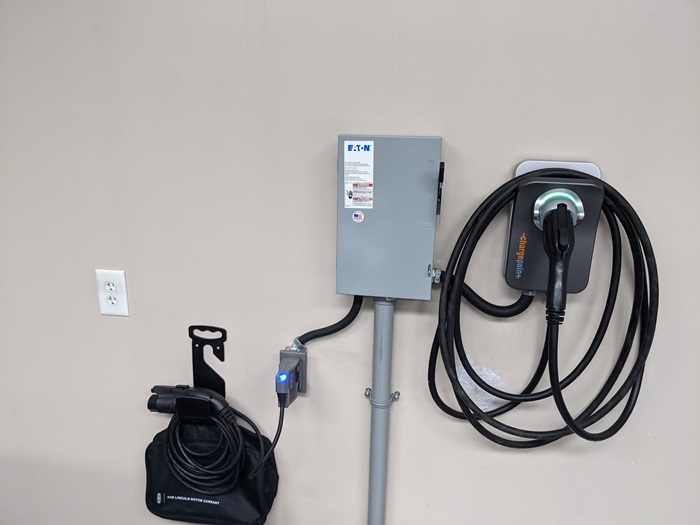
- Requirements for installing Chargepoint Home Flex
Dedicated Circuit: You’ll need a dedicated 40 or 50 amp circuit installed specifically for the charger. This ensures sufficient power delivery and avoids overloading existing circuits in your home.
Compatible Outlet: Depending on the chosen model, you’ll need a NEMA 14-50 or NEMA 6-50 outlet to connect the charger.
Local Permits: Some localities might require permits for electrical work associated with EV charger installation. It’s best to check with your local building department.
- DIY vs. Professional Installation:
Despite the ChargePoint Home Flex’s apparent ease of use, high-voltage (240V) electrical work should only be performed by certified electricians. An attempted DIY installation can pose safety risks and potentially damage the charger or your electrical system.
- Wiring and Electrical Considerations:
The electrician will handle wiring the charger to the dedicated circuit, ensuring proper grounding and adhering to electrical safety codes. They’ll also consider factors like:
Circuit breaker compatibility: The circuit breaker needs to be rated for the amperage of the charger and circuit.
Wire gauge: The thickness of the electrical wires used needs to be suitable for the amperage to handle the charging current safely.
Conduit installation (optional): Depending on the installation location, electrical conduit might be needed to protect the wiring from physical damage.
- Setup and Configuration:
Once the electrician installs the charger, the setup process is generally straightforward:
Download the ChargePoint App: This allows remote monitoring and management if your charger model supports Wi-Fi connectivity.
Connect to Wi-Fi (optional): Follow the app’s instructions to connect your charger to your home Wi-Fi network.
Activate your charger: You might need to follow instructions provided by ChargePoint to activate your charger for use.
- Troubleshooting Common Installation Issues:
Charger not powering on: Check if the circuit breaker for the dedicated circuit is tripped. – Ensure the charger is securely plugged into the outlet.
The app is not recognizing the charger: Verify a stable Wi-Fi connection. – Double-check that you entered the correct Wi-Fi credentials during setup.
Slow charging: Confirm you’re using the correct charging connector type for your car. – Ensure your car supports the amperage delivered by the charger circuit.
Remember, for any electrical issues or troubleshooting beyond basic steps, consult a qualified electrician.
Compatibility
When it comes to electric vehicles (EVs), compatibility spans various aspects, from the vehicle models themselves to their integration with home systems and renewable energy sources like solar panels.
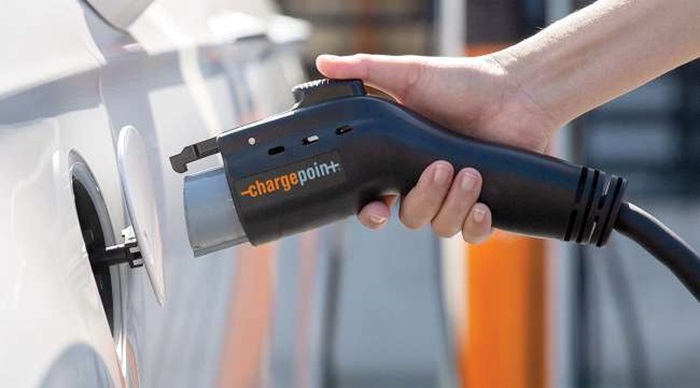
- Compatible Electric Vehicle Models
Most EVs use a standardized charging system called CCS (Combined Charging System) or CHAdeMO. These connectors allow fast DC charging at public stations. At home, you can use a Level 2 charger, which is faster than a regular outlet. Tesla uses its own proprietary connector, but adapters are available for CCS and CHAdeMO stations.
- Home Electrical System Requirements
Level 1 charging: This is the slowest charging option, typically adding 3-5 miles of range per hour. It plugs into a standard 120-volt outlet, but it may take a long time to fully charge a depleted battery.
Level 2 charging: This is the recommended option for home charging, adding 25–50 miles of range per hour. It requires a 240-volt outlet, similar to what you might use for a dryer or oven. Installation by a qualified electrician may be necessary.
Electrical panel upgrade: In some cases, your existing electrical panel may not have the capacity to handle the additional load of an EV charger. Consult with a qualified electrician to assess your home’s electrical system and determine if an upgrade is needed.
- Integration with Solar Panels
Solar power: If you have solar panels, you can integrate your EV charging with your home solar energy system to offset the cost of charging.
Time-of-use rates: Many electric utilities offer time-of-use rates where electricity is cheaper during off-peak hours. You can schedule your EV charging to occur during these times to maximize your use of solar energy and take advantage of lower electricity rates.
- Connectivity with Electric Utility Programs
Electric vehicle rebates and incentives: Many electric utilities and government agencies offer rebates and incentives for purchasing or leasing an EV. Check with your local utility provider and government websites for available programs.
Time-of-use rates: As mentioned above, time-of-use rates can help you save money on EV charging by charging during off-peak hours.
- Vehicle-to-Home (V2H) Compatibility
V2H technology: V2H technology allows your EV to interact with your home’s electrical grid. This means that your EV’s battery can be used to power your home in the event of a power outage or to sell electricity back to the grid during peak hours.
Limited availability: V2H technology is still in its early stages of development, and not all EVs or home energy systems are currently compatible.
Environmental Impact of ChargePoint Home Flex
Considering the environmental impact of electric vehicles (EVs) and their charging infrastructure is crucial for promoting sustainability.
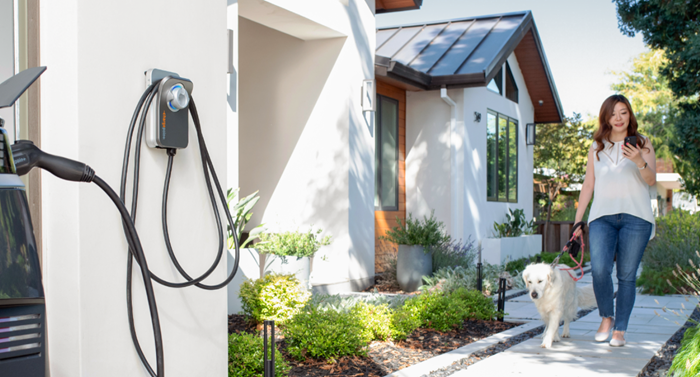
1. Reduction in Carbon Footprint:
By enabling electric vehicle (EV) charging at home, the ChargePoint Home Flex indirectly reduces reliance on fossil fuels for transportation. EVs produce zero tailpipe emissions, leading to cleaner air and a lower overall carbon footprint compared to gasoline-powered vehicles.
2. Energy Efficiency:
Level 2 charging, which the ChargePoint Home Flex supports, is significantly more efficient than charging from a standard outlet. This translates to less energy being wasted during the charging process.
3. Sustainable Charging Practices:
ChargePoint offers features that can further enhance the environmental benefits of using the Home Flex charger. For example, some models allow scheduling charging during off-peak hours when electricity from the grid might come from renewable sources or when rates are lower.
4. Eco-friendly Materials (uncertain):
There is currently limited information available regarding the specific materials used in manufacturing the ChargePoint Home Flex. While ChargePoint itself does not explicitly promote the use of recycled or sustainable materials, it’s possible they may incorporate such practices. Checking the manufacturer’s website or contacting them directly for details on their commitment to sustainability is recommended.
5. Contribution to Renewable Energy Adoption:
EV charging can incentivize investment in renewable energy sources. As more people adopt EVs and require charging infrastructure, it creates a demand for cleaner electricity generation. This can lead to a shift towards renewable energy sources like solar and wind power.
User Experience
The user experience (UX) is essential for the widespread adoption of electric vehicle (EV) charging stations.
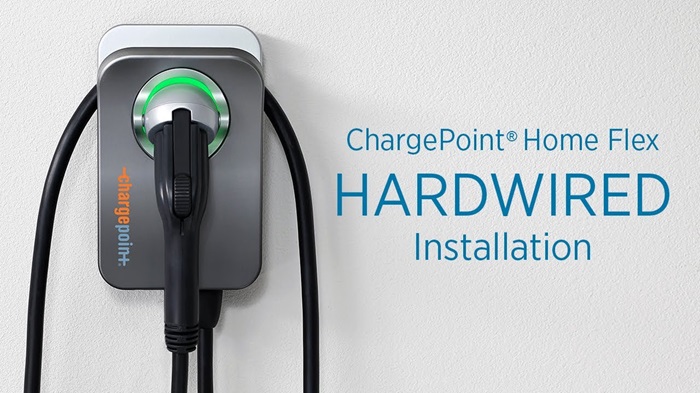
1. Reviews and Testimonials from Users:
Reading reviews and testimonials from other users provides valuable insights into the reliability, performance, and overall satisfaction of a charging station. Positive reviews can instill confidence in potential users, while negative reviews may highlight areas for improvement.
2. Ease of Use of the Charging Station:
A user-friendly interface and intuitive operation are crucial for ensuring a smooth charging experience. The charging station should be easy to plug in, initiate charging, and monitor the progress. Clear instructions and visual indicators can help users navigate the charging process effortlessly.
3. Customer Support and Service Satisfaction:
Prompt and responsive customer support is essential for addressing any issues or inquiries that users may have. Timely assistance, troubleshooting guidance, and effective resolution of problems contribute to overall satisfaction with the charging station and brand.
4. User Interface and Design of the Device:
A well-designed user interface (UI) enhances usability and aesthetics. The charging station’s interface should be visually appealing, easy to understand, and responsive to user inputs. Features like touchscreens, LED displays, and mobile app integration can improve the user experience and facilitate interaction with the device.
5. User Tips and Best Practices:
Providing users with tips and best practices for optimizing their charging experience can enhance satisfaction and efficiency. Tips may include recommendations for scheduling charging during off-peak hours, maximizing battery health, and utilizing smart charging features. Clear documentation and instructional resources help users make the most of their charging station.
Comparison with Other Products
Comparing ChargePoint Home Flex with its competitors involves evaluating several factors, including unique selling points, performance, pricing, and customer reviews.
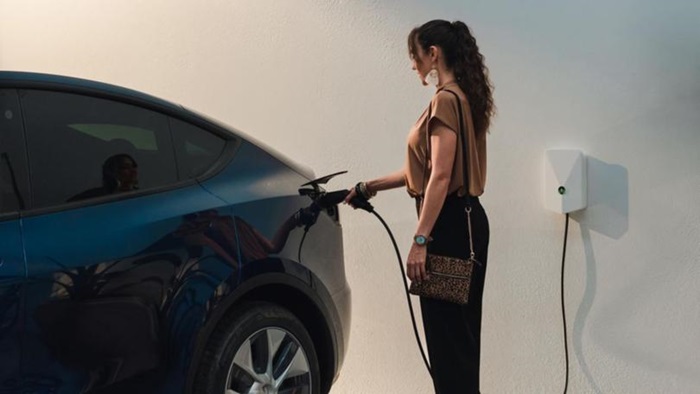
- Unique Selling Points of ChargePoint Home Flex:
Adjustable Amperage: One standout feature of ChargePoint Home Flex is its adjustable amperage settings, which allow users to customize charging speeds based on their preferences and electrical capacity.
Network Compatibility: ChargePoint Home Flex is part of the ChargePoint network, offering access to a vast network of public charging stations and convenient features like mobile app integration and charging session monitoring.
Smart Charging Capabilities: The ability to schedule charging sessions, track energy usage, and optimize charging based on electricity rates and renewable energy availability distinguishes ChargePoint Home Flex as a smart charging solution.
- Performance Comparison with Other Charging Stations:
Charging Speed: ChargePoint Home Flex offers charging speeds of up to 50 amps, depending on the selected amperage setting, allowing for faster charging compared to some competitors.
Compatibility: ChargePoint Home Flex is compatible with a wide range of electric vehicle models, offering flexibility and convenience for EV owners.
Reliability: Reviews and testimonials suggest that ChargePoint Home Flex delivers reliable performance, with minimal downtime and consistent charging capabilities.
- Pricing Comparison with Similar Products:
Pricing for charging stations can vary depending on factors such as charging speed, features, and brand reputation. While ChargePoint Home Flex may have a higher upfront cost compared to some competitors, its adjustable amperage settings and smart charging capabilities may justify the investment for users seeking customization and convenience.
- Customer Reviews and Ratings Comparative Analysis:
Analyzing customer reviews and ratings across different platforms can provide insights into user satisfaction and perceptions of ChargePoint Home Flex compared to its competitors. Factors such as reliability, ease of use, customer support, and overall value for money are key considerations in comparative analysis.
Future of Electric Vehicle Charging
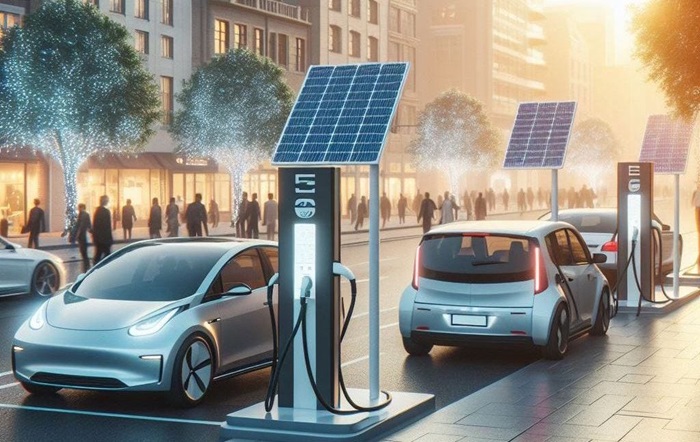
Innovations in Home Charging Technology:
- Faster Charging: Advancements in battery technology and charging infrastructure are expected to bring even faster charging times, potentially reducing a full charge to under 30 minutes.
- Wireless Charging: Wireless charging pads are being explored to eliminate the need for cables altogether, offering more convenience and potentially faster charging.
- Smart Charging: Integration with smart grids will allow for optimized charging based on electricity demand and cost. This could involve charging during off-peak hours or utilizing renewable energy sources when available.
Trends in EV Adoption and Infrastructure:
- Increasing EV Sales: As electric vehicle prices become more competitive and concerns about range anxiety diminish, EV sales are expected to continue to rise significantly.
- Expansion of Public Charging Stations: Governments and private companies are expected to invest heavily in expanding the public charging network, making long-distance travel in EVs more feasible.
Government Incentives for EV Charging:
- Tax credits and rebates: Many governments offer tax credits or rebates for purchasing EVs and installing home charging stations. These incentives are expected to continue in order to promote EV adoption.
- Investment in charging infrastructure: Government funding is likely to be directed towards building a robust public charging network, addressing potential gaps, and ensuring accessibility.
Integration with Smart Grid and Energy Systems:
- Vehicle-to-Grid (V2G) Technology: V2G allows EVs to act as energy storage devices, feeding power back into the grid during peak hours. This can contribute to grid stability and potentially provide additional income for EV owners.
- Bidirectional Charging: Bidirectional chargers will enable this V2G technology, allowing EVs to not only receive a charge but also discharge power when needed.
Predictions for the Future of Electric Vehicle Charging:
The future of EV charging is expected to be:
- Faster, more convenient, and more user-friendly: Advancements in technology will make charging quicker, easier, and potentially integrated seamlessly into daily routines.
- More Sustainable: Integration with renewable energy sources and smart grid management will promote a more sustainable charging ecosystem.
- Widely Available: A robust network of public and private charging stations will address range anxiety and make EVs a practical choice for most drivers.
In summary, the future of electric vehicle charging is characterized by innovation, widespread adoption, government support, and integration with smart energy systems. Solutions like the ChargePoint Home Flex are well-positioned to play a crucial role in shaping this future by providing reliable, efficient, and user-friendly charging experiences for EV owners.

Henry Michael is a leading expert in EV charging station research, specializing in innovative solutions for electric vehicle infrastructure. With a passion for sustainability and technological advancement, he is dedicated to advancing the accessibility and efficiency of EV charging worldwide.

